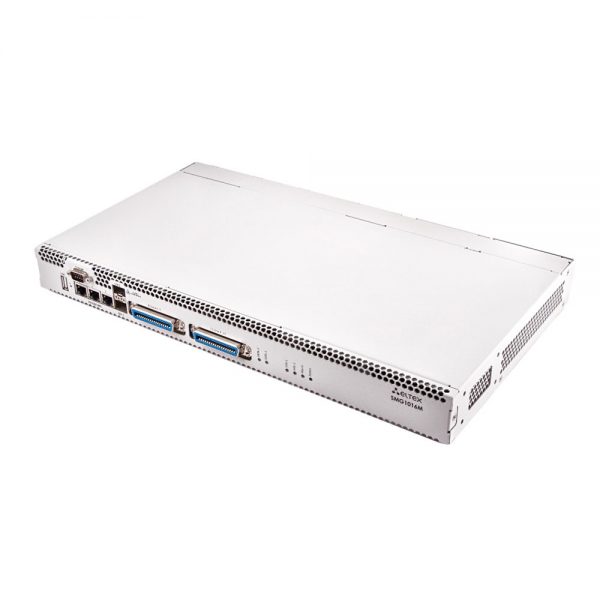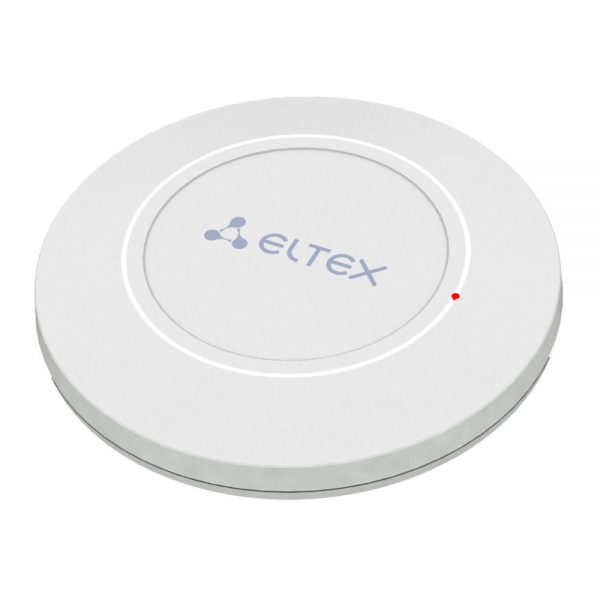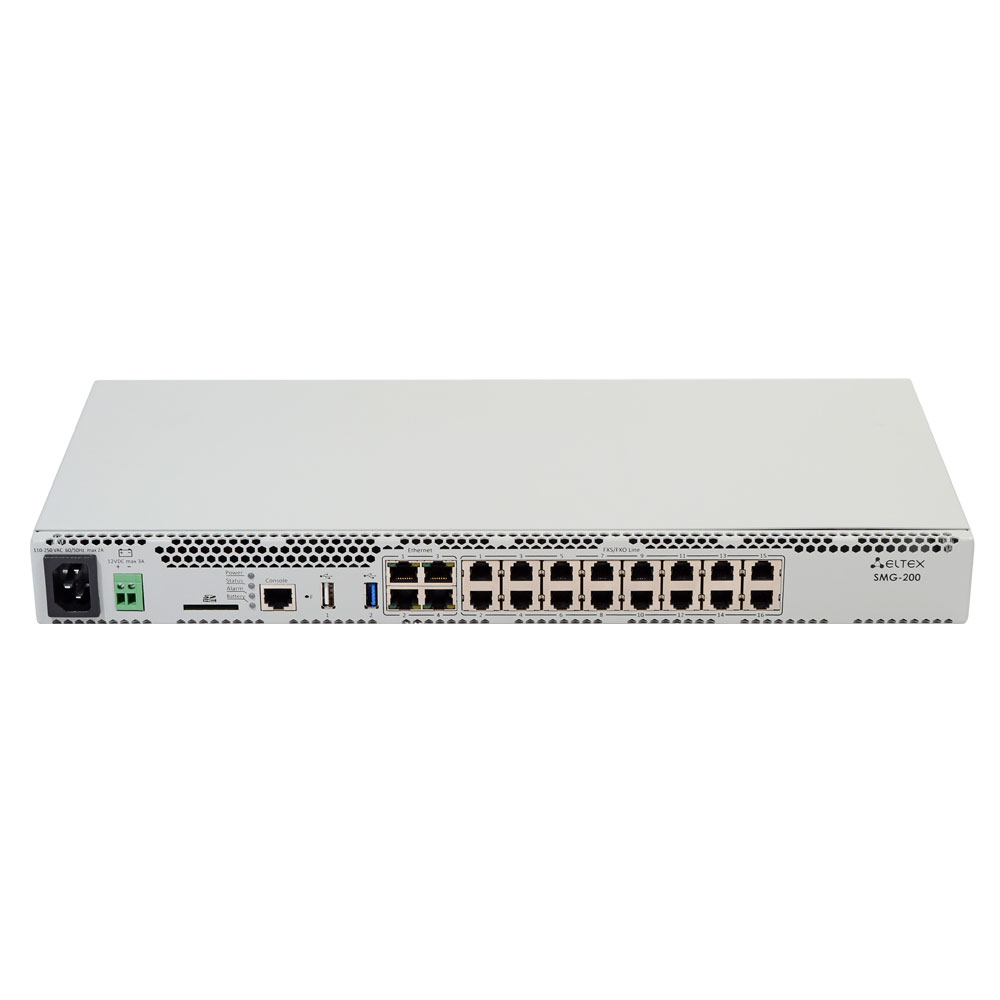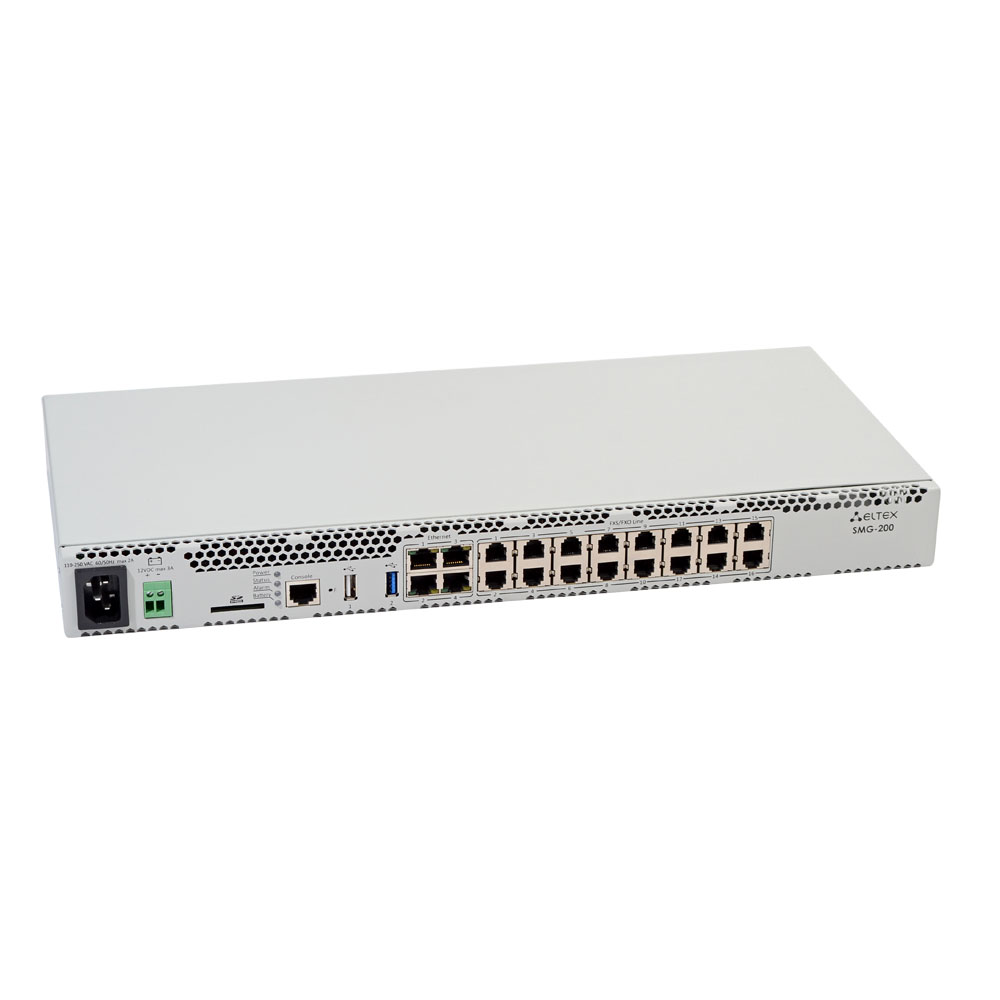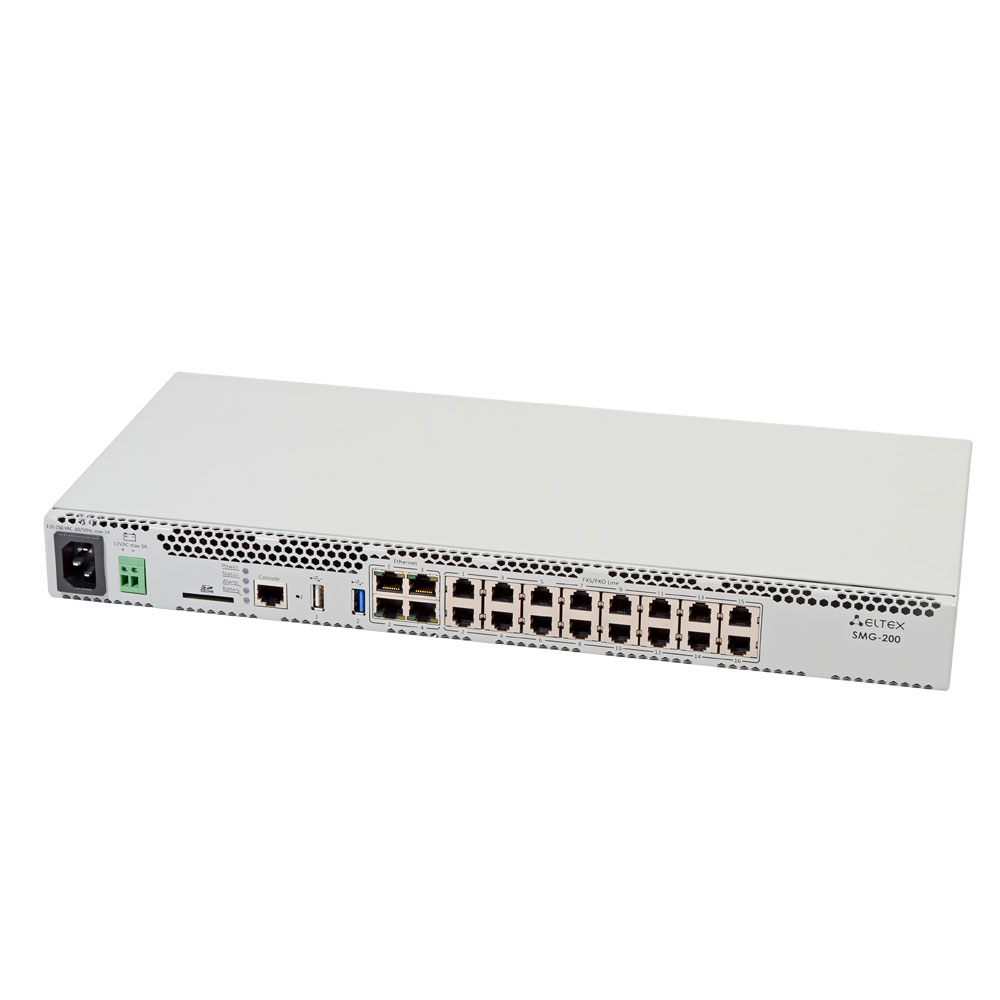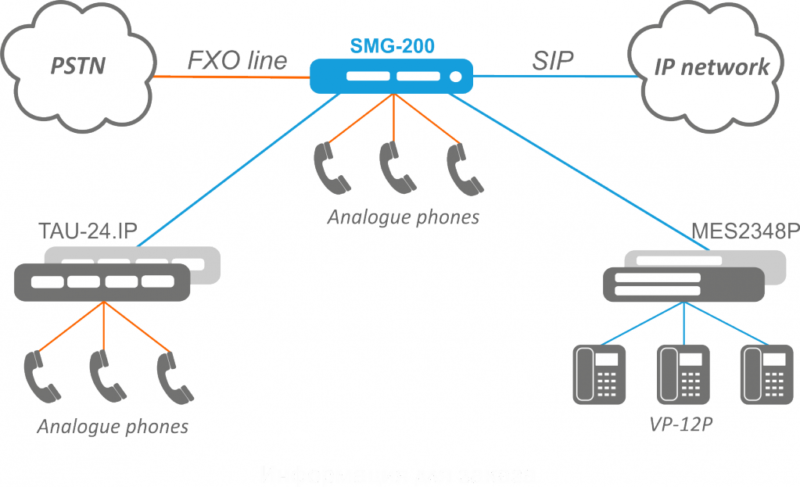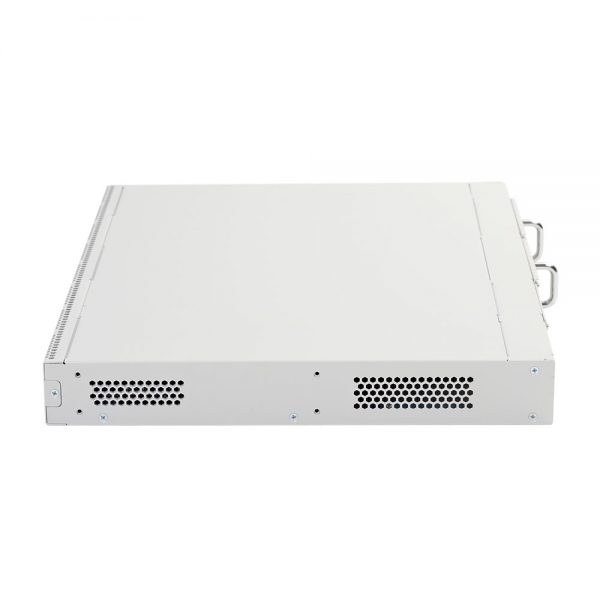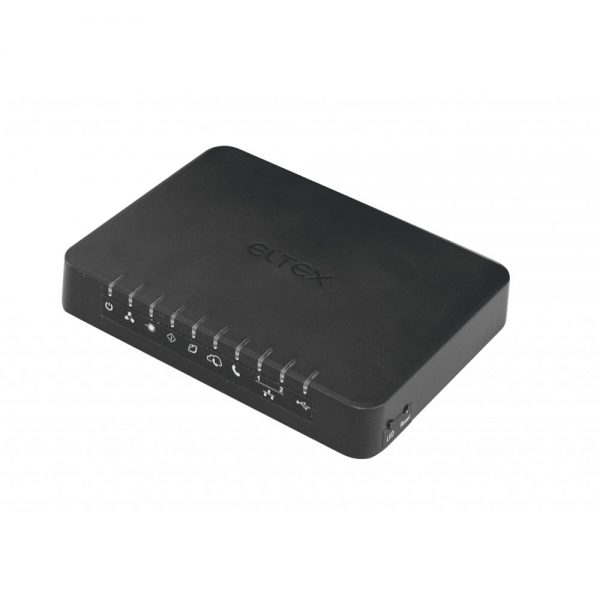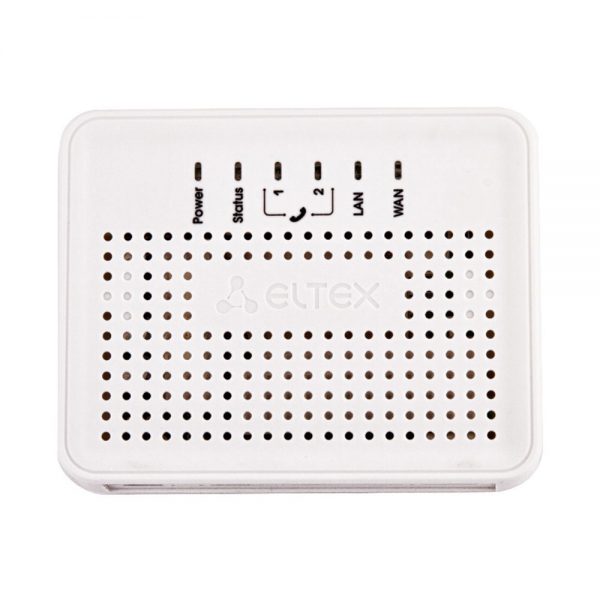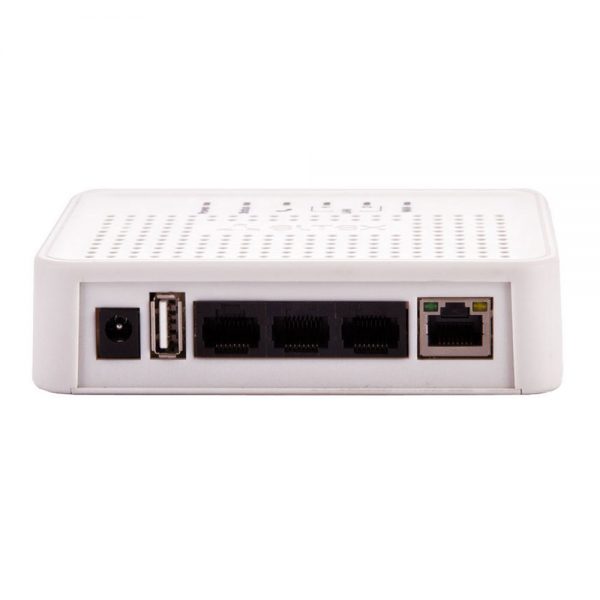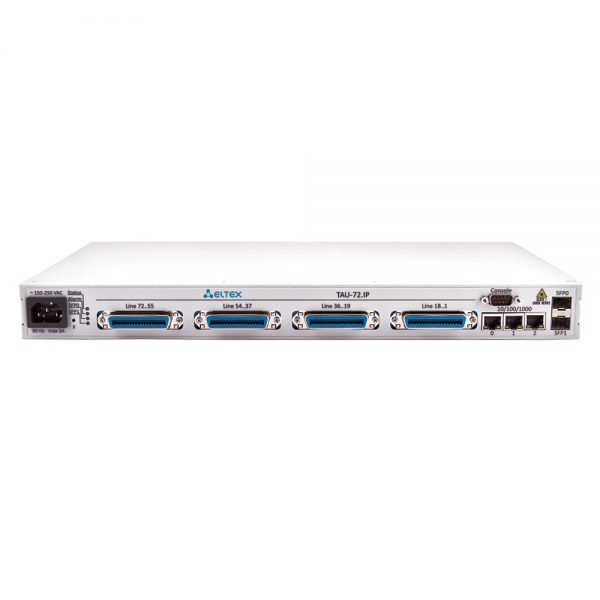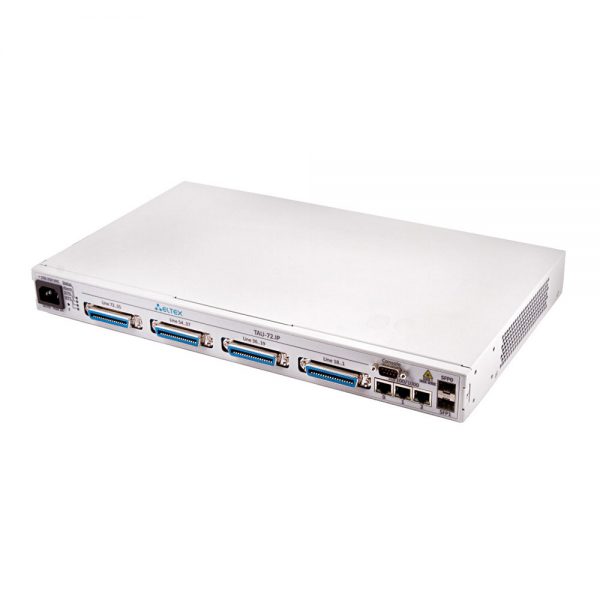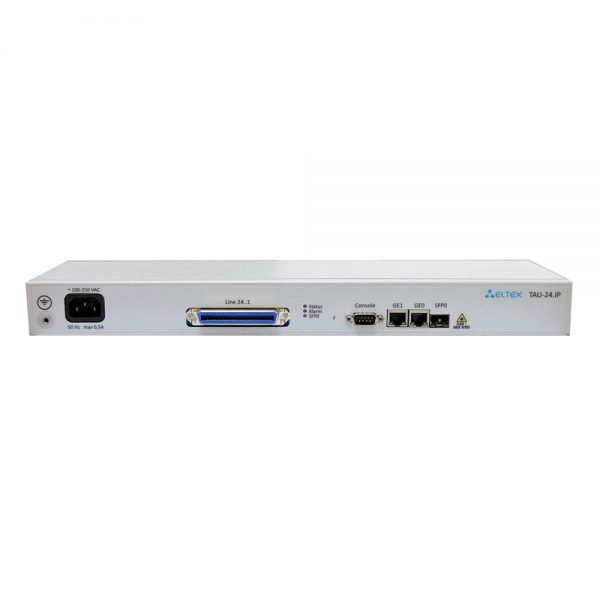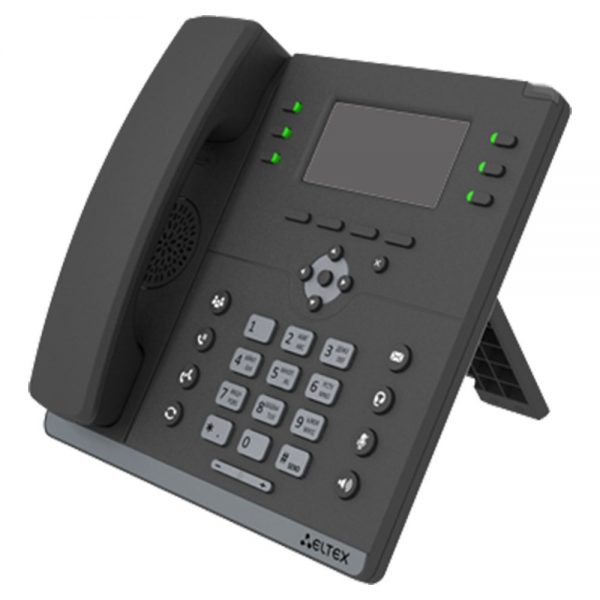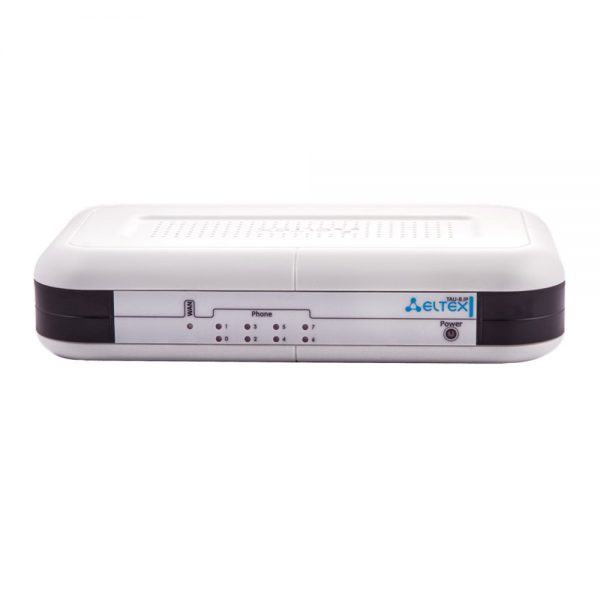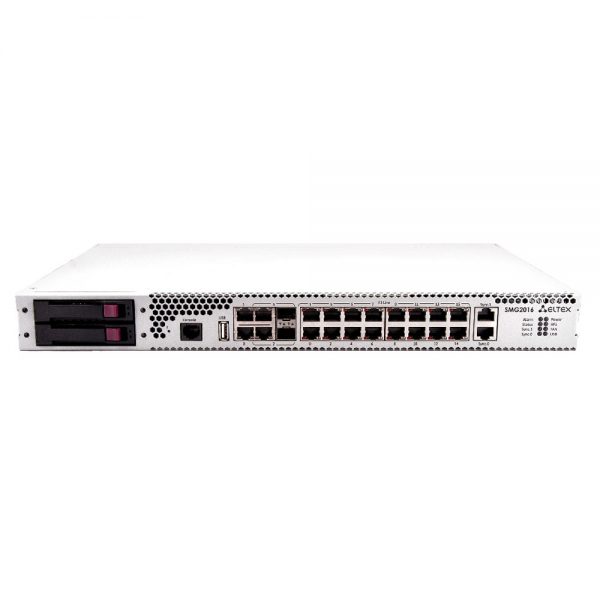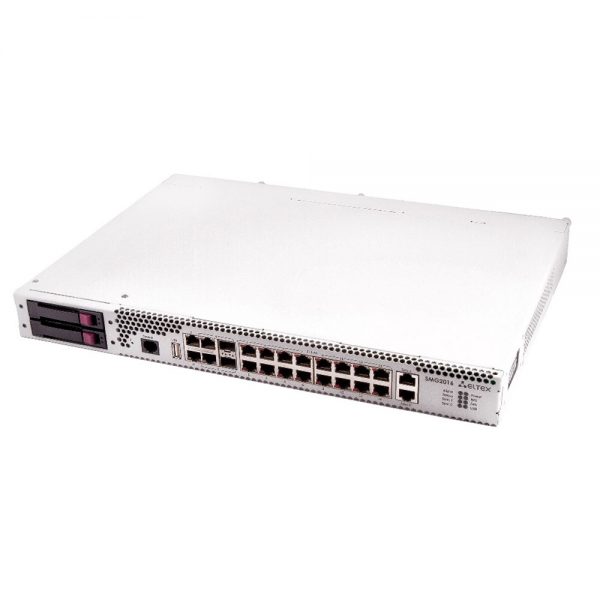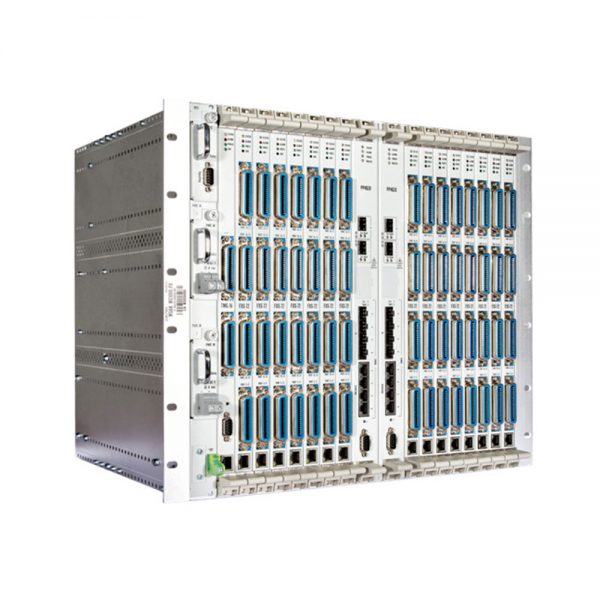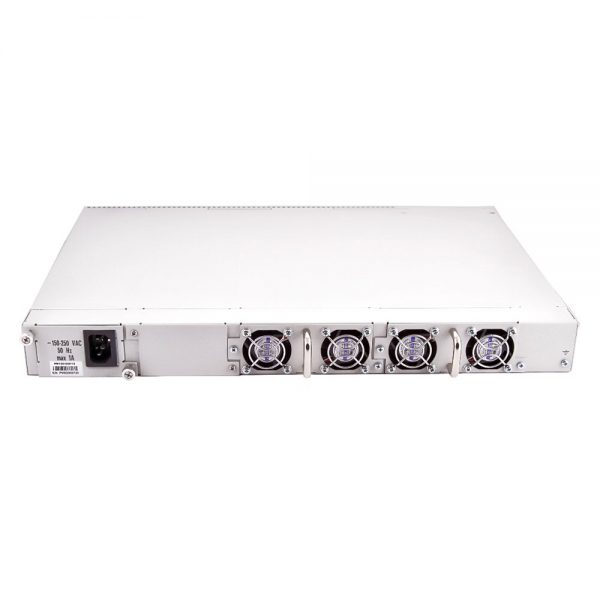Interfaces
- 16 FXS/FXO RJ-11 ports
- 4 ports of Ethernet 10/100/1000Base-T (RJ-45)
- 1 port of USB2.0, 1 port of USB3.0
- 1 slot for SD card
- 1 COM port (RS-232, RJ-45)
VoIP protocols
- SIP, SIP-T/SIP-I
- H.323
Advanced SIP/SIP-T/SIP-I features
- SIP and SIP-T/SIP-I interaction
Voice codecs
- G.711 (a-law, μ-law)
- G.726
- G.729 (A/B)
- OPUS1
- AMR1
Voice standards
- VAD (Voice Activity Detection)
- CNG (Comfort Noise Generation)
- AEC (echo cancellation, G.168 recommendation)
Functions
- Interactive voice response system (IVR) with graphic editor
- DISA – Direct Inward System Access
- Call queue:
– Various algorithms for operators selection
– Calls distribution taking into account the client repeated calls - Reporting system for operators/groups of operators (processed calls, missed calls, average timeout, etc.)
- Pulse dialing and DTMF
Call management
- Number modifications before and after routing
- Call recording according to parameters
- Subscriber lines restriction
- Subscriber service mode configuring
- Trunk group cut-off
- Direct connection of trunk groups
- Prefix for few trunk groups
- Limiting the number of simultaneous calls to a SIP interface
- Ingress load limiting (calls per seconds) for a trunk group
Billing
- Billing data is recorded in CDR file. CDR files are written on a local SD disk, USB flash or remote FTP server concurrently
- RADIUS Accounting
- Supported billing systems:
– Hydra Billing
– LANBilling
– PortaBilling
– NetUP
– BGBilling
Possible integration with other systems
Flexibility
- Single file of configuration
- Multiple network interfaces creation for telephony (SIP, RTP) with different IP addresses
- Operation with multiple numbering plans
- Voice activity control (by the presence of RTP or RTCP)1
Value Added Services
- Call Forwarding:
– Call forwarding on out of service (CFOS)
– Call forwarding on no reply (CFNR)
– Call forwarding unconditional (CFU)
– Call forwarding on busy (CFB) - Call Transfer
- Music on Hold (MOH)
- Call Hold
- Call Hunt
- Call Pickup
- Busy Lamp Field
- Conference, Add-on (CONF)1
- Conference by list1
- 3-Way conference
- Intercom1
- Paging Call1
- Call Queue
- Сall Back when the position in queue is reached1
- Call Recording
- PIN Code Access
- Follow me
- Follow me on no response
- Do not disturb (DND)1
- Calling Line Identificator Presentation (CLIP) in FSK formats (ITU-T V.23; Bell 202), DTMF, “Russian CLI”
- Caller ID and time of a call issuing in FSK mode
- Caller Line Identification Restriction (CLIR) (for FXS ports)
Security
- Black and white IP addresses lists for registration
- Attempts to access the device are logged
- Automatic blocking by IP address after unsuccessful login attempts or/and access via http/https/telnet/ssh
- List of permitted IP addresses for access to control the device
- Access rights delimitation – admin/user
- Authentication of SIP subscribers
- RADIUS authentication (RFC 5090, Draft-Sterman)
Quality of Service (QoS)
- Diffserv assignment for SIP
- Diffserv assignment for RTP1
DTMF
- Transmission via INBAND, RFC 2833, SIP INFO, SIP NOTIFY methods
Management and monitoring
- Alarm logging with opportunity to store entries on syslog server
- Tracings are stored on SD card/USB flash
- Emergency notification via SNMP1
- VoIP channels monitoring in web interface
Power supply
- AC network: 220V, 50 Hz
- Battery: 12V
¹Not supported in the current firmware version (3.11.2)

